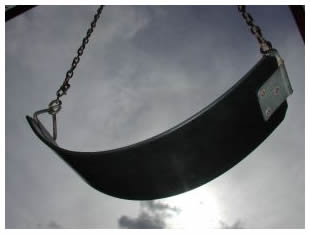 In Depression in babies and young infants we looked at how symptoms of depression can develop in babies as young as three months. In today’s article, we will look at the occurrence and signs of depression in children of elementary school age as well as the teenage years.
In Depression in babies and young infants we looked at how symptoms of depression can develop in babies as young as three months. In today’s article, we will look at the occurrence and signs of depression in children of elementary school age as well as the teenage years.
Estimates on the occurrence of depressive states in children and adolescents fluctuate from study to study, so it is hard to get a handle on a percentage value of the number of clinically depressed individuals in this age group. However, research has illuminated one fact: depression is less frequent in children than in adults but that during adolescence, the incidence of depression rises more dramatically than at any other time during the lifespan. In fact, during adolescence, depression is more frequent than in adults. As disturbing as this information may be, we can draw some comfort in the obvious conclusion that depression can be treated such that adulthood represents a relatively more stable life phase, at least in terms of occurrence of depression.
As far back as 1988, it was confirmed experimentally that depressed adolescents are particularly vulnerable to problems of self image, low self esteem, and self-consciousness. Although this may seem obvious, it is important in all areas of scientific research to establish these “truisms” as actual fact; else they remain nothing but hearsay. In another similar study involving adolescents and depression, it was found that individuals who experience limitations due to prolonged illness are also at risk of developing depression.
As we might expect, the symptoms of clinical depression differ somewhat in older children and adolescents than those exhibited by babies and infants, although there does exist a common thread. These symptoms include:
1. sad expression, chronic unhappiness, apathy, irritability
2. decreased socialization, lack of interaction with peers
3. feeding problems in young children; in adolescents intermittent eating
dysfunctions such binge eating or lack of appetite
4. sleep problems (e.g. nightmares, night terrors in children.) In adolescents,
difficulties in falling asleep or staying asleep
5. lethargy, low self esteem, guilt
6. poor school performance
7. accident proneness in children. In adolescents, thoughts of suicide, depressed outlook
on life
8. school phobias in young children, anxiety in adolescents
9. unexplained physical ailments which may be attributed to mood disturbances
(e.g. gastrointestinal problems, eczema etc)
Major depressive disorder is more prevalent in females, which mirrors the situation present in adulthood. One marked difference between children and adults who suffer from depression is that children, particularly boys, tend to be far more aggressive when depressed than do adults of both genders. It is not surprising therefore that childhood depression can be misdiagnosed as ADHD or Conduct Disorder. Adolescents with Bipolar Disorder may also become aggressive, although additional symptoms including impulsiveness and promiscuity typically accompany this condition.
Treatment for childhood and adolescent depression ranges from drug intervention to psychological counseling. Medication should only be used as a last resort, for example, where suicide is a likely outcome. The human brain continues to develop until roughly the age of 25, and the long-term effects of antidepressant medication on the brains of both adults and children is largely unknown.
Drug therapy, where valuable in some instances, does not solve the problem and this is where counseling and changing the child’s environment, both physical and mental, through various psychological tools can provide the best long term prognosis.
Contact Beth McHugh for assistance regarding this issue.
Related articles:
Depression in babies and young infants
Depression: Symptoms and Treatment (1)
Depression: Symptoms and Treatment (2)
What is the best treatment for depression?
Feeling bad about taking antidepressants?
When antidepressants aren’t the best option (1)
When antidepressants aren’t the best option (3)
When antidepressants aren’t the best option (2)
Chocolate may make your depression worse!
Depression, antidepressants and sex
Depression: The myth of “Chemical Imbalance”

